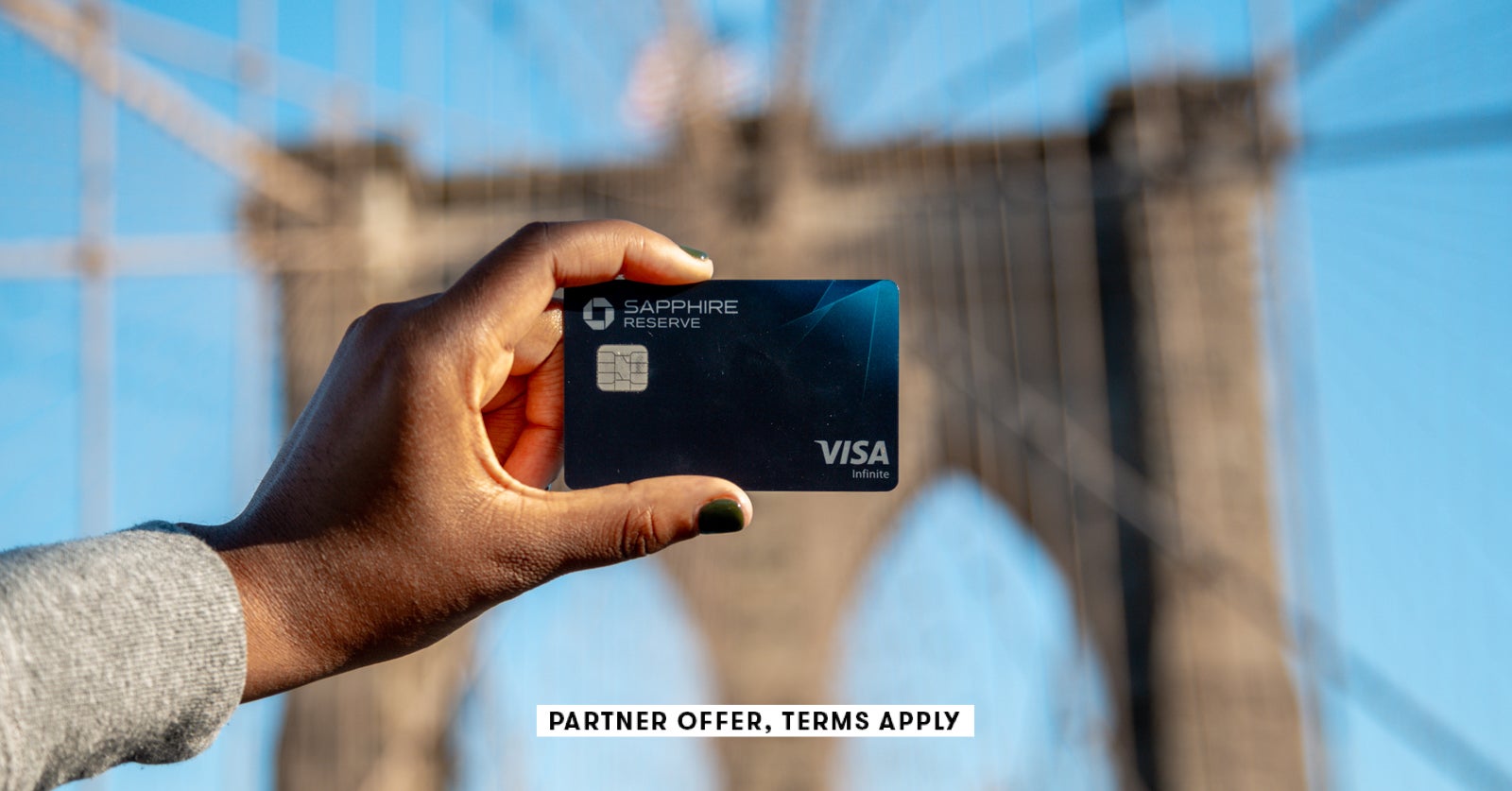I’m a big fan of reevaluating credit cards every year to see whether they still merit a place in my wallet and whether it’s worth paying that annual fee again. That’s true whether the annual fee is $50 or $550 like the Chase Sapphire Reserve.
As a premium card, the Sapphire Reserve is flush with benefits and perks. It’s also offering the best welcome bonus we’ve seen in five years. With all that in mind, do the benefits merit the price tag once you’ve used the points from the sign-up bonus?
Let’s take a look at whether the Chase Sapphire Reserve is worth the annual fee beyond the first year’s welcome offer.
Welcome bonus
As stated, the Sapphire Reserve is currently offering the best bonus we’ve seen in half a decade. New applicants can earn 80,000 bonus Ultimate Rewards points after spending $4,000 on the card within three months of account opening.
TPG values Ultimate Rewards points at 2 cents apiece. That means this bonus is worth $1,600.
You’ll see that Chase says this bonus is worth $1,200 in travel, which is accurate if you redeem your points within the Chase travel portal. On those bookings, Sapphire Reserve cardholders can redeem their points at a flat value of 1.5 cents each.
However, it’s possible to receive more value when redeeming your points if you use them with Chase’s airline and hotel transfer partners. You can often do better than 2 cents per point when redeeming for flights in business class or hotel rooms during expensive holiday travel periods.
Related: How to redeem Chase Ultimate Rewards points for maximum value
Priority Pass Select membership
Sign up for our daily newsletter
Related: How valuable is a Priority Pass lounge membership?
Additionally, those who have a Priority Pass membership from Chase can access Priority Pass-affiliated restaurants at select airports. Those with a Priority Pass membership from American Express cards issued in the U.S. can’t visit these restaurants without paying for the meals out of pocket. When you dine at these restaurants, you can enjoy a certain amount of free food and drinks — often in the $25-$28 per person range. And your free guests aren’t limited to the lounges; you can also bring guests to these restaurants, meaning a free lunch at the airport for two or three people while you wait for boarding.
Related: Amex Platinum vs. Chase Sapphire Reserve: Which card is right for you?
Up to $300 in annual travel credit
Taking advantage of up to $300 in annual travel credit means you can offset more than half of the Sapphire Reserve’s annual fee with this perk alone.
What counts as travel for this $300 credit each year is quite broad: bus tickets, flights, hotels and more. The best part of the benefit is that it applies automatically to the first $300 you spend on travel each cardmember year — meaning it’s tied to the date when you opened the card, not the calendar year.
Any qualifying purchase will automatically trigger the credit, and you should see a statement credit, typically within a day, offsetting your purchase. This will happen until you’ve exhausted your $300 credit and will resume during your next cardmember year.
This can be a great way to offset travel costs for which you can’t redeem points and miles, such as a boutique hotel that’s not part of a points program or paying for your pricey seaplane transfer to your resort in the Maldives.
Free food
Sapphire Reserve cardholders can take advantage of $30 a month in free food and waived delivery fees, thanks to a few partnerships.
If you maximize these $30 in credits each month, that’s $360 over the course of a year.
Top-notch travel and purchase protections
The insurance benefits offered on the Sapphire Reserve are some of the best available. Because the Sapphire Reserve is a Visa Infinite card, you’ll receive the perks that come along with the program. Visa Infinite perks include primary rental car insurance, trip cancellation and delay coverage, lost luggage reimbursement, concierge service and Luxury Hotel & Resort Collection access.
You’ll also gain protections that provide immeasurable value should an emergency come up during your vacation, such as emergency medical and dental benefits and emergency evacuation and transportation insurance.
Related: Why the Chase Sapphire Reserve is the top card for booking rental cars
The best part of these travel benefits is that many of them apply if you pay for just a small part of your trip using the card, such as using Ultimate Rewards points for a hotel redemption or paying the taxes and fees on an award booking.
However, there are also insurance benefits that can help protect the items you buy when paying with the Sapphire Reserve. This includes purchase protection of up to $10,000 per claim and up to $50,000 per account for items you purchased within the past 120 days that are broken or stolen. It also includes extended warranty protection (adding an extra year onto a manufacturer’s warranty of three years or less) and return protection (when a merchant won’t accept a return for an item you purchased in the last 90 days, up to $500 per item and up to $1,000 per year).
Status and luxury perks
While the Sapphire Reserve doesn’t provide any hotel or airline elite status levels, that doesn’t mean the card is devoid of status-like perks on these stays. Cardholders have access to Chase’s Luxury Hotel & Resort Collection, which provides benefits like room upgrades, free breakfast each day and an on-property credit worth up to $100 on these bookings.
Cardholders also have access to exclusive benefits, such as lounges at stadiums like Madison Square Garden, exclusive dinners, VIP events and experiences or special perks at the U.S. Open tennis tournament, to name a few.
Thanks to another perk, cardholders can also zip through security at airports and at the U.S.-Canada border. The Sapphire Reserve provides reimbursement for your application fee with Global Entry, TSA PreCheck or Nexus. This benefit is available once every four years.
Other perks
Another strong point of the Sapphire Reserve is its earning structure. Cardholders earn 10 points per dollar on hotels and car rentals purchased through the Chase Ultimate Rewards travel portal, 10 points per dollar on dining purchases through Chase Ultimate Rewards, 5 points per dollar on flights purchased through Chase Travel, 3 points per dollar on all other travel (excluding the $300 travel credit) and dining purchases worldwide and 1 point per dollar on everything else.
Plus, cardholders earn 10 points per dollar on Lyft rides through March 2025.
While you may be hesitant to book through a travel portal for fear of not receiving your elite status perks at hotels, there are times when it can make sense. These include hotels that don’t participate in loyalty programs or if you don’t have elite status with that hotel program. In these scenarios, booking through the portal for extra points or using your points at a higher redemption rate can make sense.
Even if you don’t want to book with Chase’s portal, you’ll still earn a respectable 6% return on spending on dining and in a broad-based travel category, according to TPG’s latest valuations.
Related: Chase Sapphire Reserve credit card review
Bottom line
Free coffee, beer or food at an airport lounge before every flight can save hundreds of dollars compared to the expense of buying these items at airports. Conversely, maybe you think you’re only consuming these things because they’re there and free. Look at what value the Sapphire Reserve is adding to your life and how much money you would spend if you didn’t have these benefits, then you’ll know whether the annual fee is worth it in your particular situation.
Official application link: Chase Sapphire Reserve with an 80,000-point welcome offer after you spend $4,000 on purchases on your new card within the first three months from account opening.





















Discussion about this post